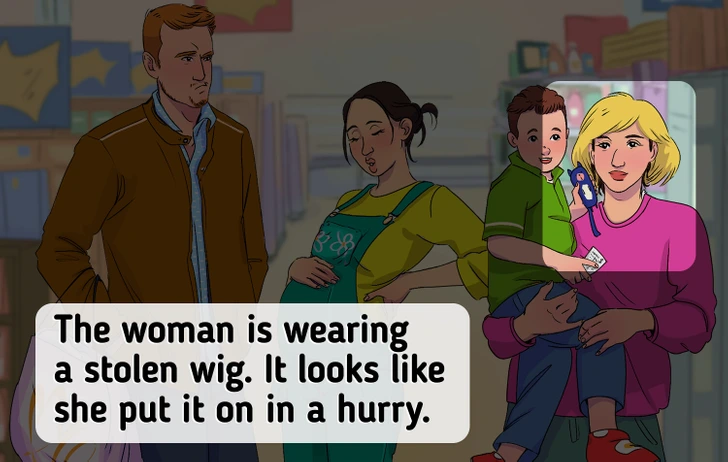Have you ever found yourself captivated by a seemingly simple riddle, only to realize that the answer was hidden in plain sight? The image above presents just such a puzzle. It’s an intriguing challenge where your attention to detail and logical thinking are put to the test. So, let’s dive in, analyze the clues, and see if you can crack the case: who is the thief?
Why Puzzles Like These Are So Addictive

Riddles like this one are more than just a fun pastime. They engage your mind, sharpen your observational skills, and encourage critical thinking. But here’s the catch—our brains are often wired to overlook subtle details. How many times have you rushed to an answer, only to discover that a small, overlooked clue completely changes the solution?
That’s exactly what makes this puzzle fascinating. It’s not just about what you see at first glance but about piecing together the narrative hidden in the details. Ready to give it a shot? Look closely at the image, weigh the evidence, and try to uncover the truth.
Common Mistakes When Solving This Puzzle
Before we break down the solution, let’s talk about some common pitfalls that lead people astray. Most readers focus too much on the obvious suspects: the disgruntled man holding a bag, the playful child, or the pregnant woman casually resting her hand on her belly. These characters might seem like the likely culprits because our assumptions about their appearances cloud our judgment.
For example, the man’s annoyed expression might make him look suspicious. However, emotions alone are not evidence. Similarly, the pregnant woman’s relaxed posture could distract you from noticing other vital details in the scene. The key here is to focus on the tiny, seemingly insignificant clues that can point you in the right direction.
Step-by-Step Guide to Solving the Puzzle
Now, let’s analyze the image systematically to figure out who the real thief is.
- Look Beyond Facial Expressions and Postures At first glance, the man’s stern look might catch your eye. But ask yourself: does he have any physical evidence pointing to theft? His shopping bag appears legitimate, and there’s no visible clue tying him to the crime. The same goes for the child—although children can sometimes be mischievous, there’s no direct hint here suggesting the boy is involved.
- Notice Out-of-Place Details Move your attention to the woman holding the child. She appears to be a caregiver, but look closely at her appearance. Her hair seems slightly disheveled, and something about it feels unnatural. Could this be a wig? And if so, why would she need to wear one? This subtle observation is your first major clue.
- Examine Clues in Context Let’s focus on the statement: “The woman is wearing a stolen wig. It looks like she put it on in a hurry.” This gives us a clear motive and explains her messy hair. Perhaps she grabbed the wig during the commotion and quickly put it on to avoid suspicion. Her nervous demeanor further supports this theory—she’s hiding something.
- Cross-Check Against Other Characters Compare this observation with the other characters in the scene. The pregnant woman appears relaxed, showing no signs of urgency or discomfort. The child looks innocent, and the man’s body language doesn’t indicate guilt. All signs point back to the woman with the wig.
- Connect the Dots The stolen wig provides both motive and evidence. Her rushed appearance, combined with the subtle clues in her outfit and behavior, make her the most likely suspect. Case solved: the woman wearing the wig is the thief!

Why Paying Attention to Details Matters
This puzzle is a perfect example of why paying attention to details can lead you to the right answer. Often, the solution lies not in what’s obvious but in what’s unusual or inconsistent. By training your brain to notice these discrepancies, you can develop stronger critical thinking skills that apply to everyday life.
What’s Your Answer?
Now it’s your turn! Do you agree that the woman with the wig is the thief? Or do you have another theory based on the clues in the image? Share your thoughts and reasoning in the comments below. Remember, there’s no such thing as a wrong answer in puzzles like these—every perspective helps us see the bigger picture.
Conclusion: Keep Challenging Your Mind
Puzzles like this are more than just a fun activity—they’re a workout for your brain. By tackling challenges that require observation, deduction, and reasoning, you can improve your mental agility and attention to detail. So, whether you nailed this puzzle or missed the mark, don’t stop here! Try more riddles, test your logic, and see how much you can sharpen your skills.
After all, the more you train your mind, the better you’ll get at solving life’s real puzzles. Ready for the next challenge? Let’s dive in!


